
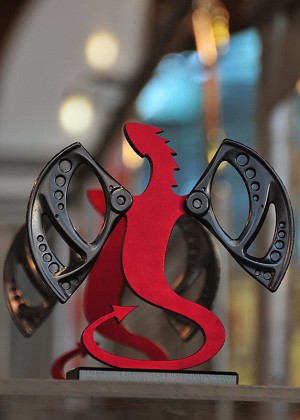
DMM unveiled their new Dragon Cams at the OutDoor trade show in Germany last month and the twin axle beauties went down a treat.
UKC Gear Editor Kevin Avery handled the cams at the trade-show and was impressed:
"First impressions and the new Dragon Cams look great. The large units feel light, action is smooth and the quality of finish very high. Just what we've come to expect from DMM over the years."
The DMM team at the Llanberis factory in North Wales seem justifiably proud of the new cams:
"I've never seen so much excitement in the office over a new product. Everyone has been stopping-by at the Cam Assembly Unit to see the Dragons being put together." commented Simon Marsh of DMM.
Twin Axle
The cams feature a twin axle design that was originally used on the well known and highly respected Black Diamond Camalots. The twin axle cam was originally designed and patented by Tony Christianson who then worked with Chouinard Equipment (now Black Diamond Equipment) to produce the Camalot. The twin axle patent expired in the USA in 2005 and in Europe in September 2006.
I asked Simon Marsh at DMM why they had gone down the twin axle route and also asked if he would explain the concept behind the design of the new Dragon Cams.
“On mainstream cams climbers value range so we decided to see how we could offer this and looked at various concepts; we eventually settled on two designs we wanted to explore further – a dual axle and a triple axle design. DMM actually have a patent on a rather nice triple axle design, but it soon became clear that the construction costs would be prohibitive.
So we decided to play around with the double axle design and work out the weaknesses - weight, cam angle, spring tensions, stems twisting and lack of a doubled sling. Hence the Dragon cam.”
From an outsiders point of view the most obvious difference between the new Dragon Cams and the BD Camalots is that DMM have used their specialist skill in hot-forging to shave off weight and add a super-suave looking finish. The cam lobes themselves are very well finished, and the units look the business, but as I explored further it became apparent that there has been quite a few design tweaks that perhaps aren't so obvious:
These tweaks include the way the stem is designed, with DMM putting in a lot of work in this easily over-looked area.
“The stem contributes a lot to the weight of a camming unit and it took us a long time to find a solution that met all of our criteria. We use 5mm cable on the stem and 3.2mm on the loop, connect them with a clever 3 way swage and then over-mould the whole thing to create a sealed unit that maintains flexibility in all directions. The stems we showed on the prototype models were a touch stiff, especially on the smaller sizes, so we are working hard to find a slightly more flexible material that is still really tough.” commented Simon.
The Llanberis team have also put their new CNC machines to good use in order to take off as much excess metal as possible from the various components. The cams will feature doubled slings and, following recent tests, it is likely that they will use a new 8mm webbing which offers increased durability and better tight angle performance.
“We have been playing around with skinny tapes for a while and are getting some really interesting results – it was strange to see the new 8mm dyneema perform better than thicker more traditional tape, especially when knotted and placed around a sharp bend.” explained Simon.
Cam angles are being kept at a constant 13.75 degrees so the range on each cam is slightly less that the equivalent Camalot, but the holding power is increased. The cam springs will also be kept taut to help the cams seat firmly into position and minimize walking.
UKC get an exclusive look at the range on each cam:
DA1: 20.0 - 33.5mm
DA2: 24.8 - 41.0mm
DA3: 29.8 - 50.1mm
DA4: 38.0 - 64.0mm
DA5: 50.0 - 85.0mm
DA6: 68.3 – 114.0mm
The cams are due to be released for sale next spring and UKClimbing.com will be visiting the DMM factory later this year to check out the next batch of samples hot off the hot-forger.
The price is set to be £50 per cam, except for the biggest size which will be £60.
Info on the cams from the DMM website:
Six colour-coded sizes are used to cover a range from 20mm to 114mm, based on a constant cam angle of 13.75°. Not all manufacturers use the same angle for spring-loaded camming devices (SLCDs). DMM believes that this angle offers the best combination of holding power and expansion range. The logarithmic spiral is the mathematical theory behind ensuring that the line between the axle and point of contact is always at a constant angle to the rock surface, irrespective of the unit's orientation.
To prevent corrosion the cam lobes are anodised. A Duplex cable system is used, 5mm cable on the stem and 3.2mm on the loop, so that the unit has the same flexibility through 360°. Whether the placement is vertical or horizontal you'll reap the benefits.
The cable assembly is overmoulded using Zytel, offering good flexibility and durability with proven reliability in a variety of climatic conditions. The trigger bar is made from the same material with a 'relief' designed grip to help you get that crucial placement first-time, even with sweaty fingers. As with our 4CU and 3CU range, Dragons have an extendable Dyneema sling, allowing you to carry fewer quick draws, saving on bulk and weight on your harness.



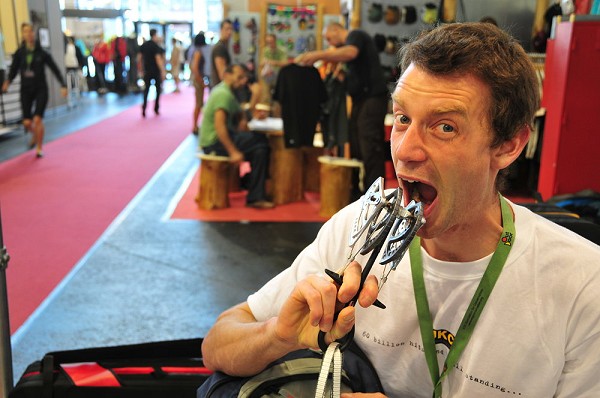




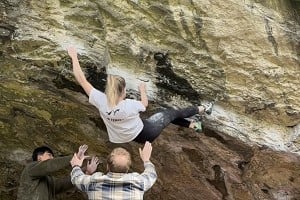
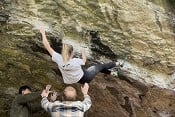

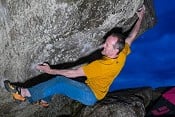
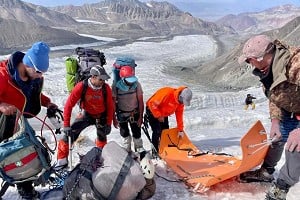
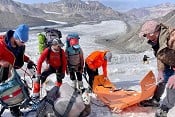



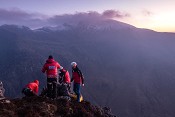
Comments